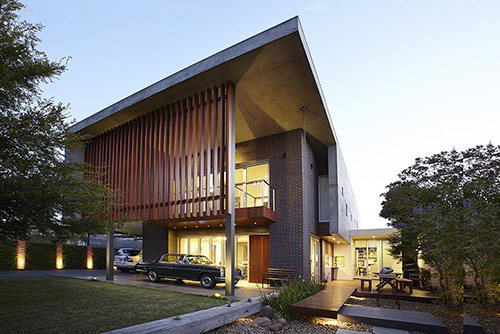Exactly How Residential Architects Create Custom-made Houses for every single Way Of Life
The procedure by which household architects layout personalized homes is a nuanced interaction of comprehending client demands and converting those insights right into useful living spaces. With thorough examinations and the usage of style devices, architects capture the significance of their customers' way of livings, making certain that each home shows personal worths and aspirations.
Recognizing Client Needs

Reliable communication is critical in this process. Designers should motivate clients to verbalize their way of livings, family characteristics, and future goals, guaranteeing that the layout mirrors their distinct identity. By employing devices such as questionnaires, meetings, and aesthetic studies, designers can collect useful insights into the customer's vision.
In addition, comprehending the context in which a home will exist is crucial. Architects have to take into consideration factors such as the website attributes, regional environment, and cultural impacts that can impact the layout. This holistic approach allows for the development of areas that are not only cosmetically pleasing however sustainable and likewise sensible.
Ultimately, a deep understanding of client requires enables designers to create customized homes that enhance the top quality of life for their passengers, cultivating a sense of belonging and convenience within their living environments.
Style Refine and Cooperation
The style procedure in property style is a vibrant interaction of imagination and collaboration, where engineers, customers, and numerous stakeholders function closely to bring a vision to life. This repetitive trip typically begins with a series of meetings to establish a detailed understanding of the client's goals, choices, and way of life requirements. Throughout these conversations, architects collect necessary information, enabling them to conceive designs that straighten with the customer's vision.
Adhering to the first examinations, the design phase evolves through sketches, 3D versions, and architectural renderings. This aesthetic communication acts as a device for engineers to present concepts, while also welcoming customer feedback, making sure that the final design resonates with their expectations. Efficient cooperation with engineers, professionals, and interior developers is essential during this phase, as it makes certain that all useful aspects of the task are effortlessly integrated.

Incorporating Lifestyle Aspects
Including way of life elements into household layout is crucial for developing spaces that really resonate with the residents. residential architecture homes. This process starts with recognizing the unique needs, choices, and daily regimens of the home owners. Architects participate in extensive conversations to discover how the private or household utilizes their room, whether for entertaining visitors, going after pastimes, or seeking quiet retreat
As soon as these understandings are collected, engineers can tailor layout attributes that improve day-to-day experiences. As an example, open flooring strategies might be made for households that focus on togetherness, while devoted offices can be integrated for those that function from home. Exterior locations, such as outdoor patios or gardens, can be highlighted for households that take pleasure in outside activities or amusing.
Furthermore, adaptability is a crucial factor to consider; multi-functional spaces permit for adaptability as way of lives progress in time. Personalized storage services can likewise be included to satisfy specific company requirements, ensuring that the home stays practical and clutter-free. Inevitably, by attentively weaving way of living elements into the architectural fabric, residential architects develop personalized homes that not only satisfy visual desires but also significantly improve the top quality of life for their customers.
Sustainable and Smart Design
Clever and sustainable layout progressively plays a pivotal role in household design, as home owners seek to decrease their ecological impact while boosting their living experiences. Engineers are now incorporating green materials, energy-efficient systems, and cutting-edge modern technologies to develop homes that not just meet visual needs yet likewise serve the planet.
Including renewable resource resources, such as photovoltaic panels and wind turbines, permits homeowners to harness natural sources, significantly decreasing dependence on conventional power grids. Smart home technologies even more boost sustainability by optimizing energy usage through automated systems that regulate lights, heating, and cooling based on occupancy and choices.
Furthermore, making use of lasting structure materials-- like recovered wood, bamboo, and recycled steel-- advertises a circular economic climate, lowering waste and resource consumption. Architects likewise highlight passive layout concepts, ensuring homes are oriented for optimum natural light and ventilation, therefore minimizing the need for fabricated heating & cooling.
Along with ecological benefits, lasting and clever layout adds to the general comfort and health and wellness of homeowners. By prioritizing indoor air quality find here and natural elements, review engineers develop areas that foster health, enabling homeowners to grow attuned to their environment.
Completing and Applying Plans
Finalizing and carrying out plans is an important stage in the household design procedure, where the vision of a personalized home starts to emerge. This phase involves thorough focus to information, making sure that every aspect of the layout is exactly expressed and all set for construction. residential architecture homes. Designers work together carefully with customers to review final strategies, addressing any kind of last-minute modifications or worries, while making certain that all components align with the homeowner's lifestyle requirements
When plans are settled, designers prepare detailed building and construction records, including in-depth illustrations and specs that function as a blueprint for home builders. These papers detail materials, surfaces, and installation methods, providing clarity for subcontractors and contractors. Additionally, safeguarding essential authorizations and sticking to local building codes is essential, as it ensures conformity and smooth task execution.
Effective communication is essential throughout this stage. Routine updates and discussions with building contractors aid to alleviate potential issues prior to they occur. By fostering a joint atmosphere, architects can assure that the execution aligns with the initial vision. Eventually, this important stage changes principles right into truth, laying the foundation for a home that shows the distinct lifestyle and choices of its occupants.
Conclusion
In conclusion, domestic designers play an essential function in crafting tailored homes that provide to varied way of livings. Via thorough understanding of customer demands, joint layout procedures, and the assimilation of way of living components, designers you could try this out ensure that each home reflects specific choices.
The procedure by which household engineers style personalized homes is a nuanced interplay of comprehending client needs and translating those understandings right into useful living areas. With extensive assessments and the use of design devices, engineers catch the essence of their clients' lifestyles, making certain that each home mirrors personal values and aspirations. Engineers must motivate clients to express their way of livings, household dynamics, and future desires, making sure that the style reflects their one-of-a-kind identification.The design procedure in property architecture is a vibrant interplay of creativity and cooperation, where architects, clients, and numerous stakeholders function carefully to bring a vision to life - residential architecture homes. Through precise understanding of customer demands, joint design processes, and the integration of lifestyle elements, engineers make certain that each home reflects private choices
 Jake Lloyd Then & Now!
Jake Lloyd Then & Now! Erik von Detten Then & Now!
Erik von Detten Then & Now! Talia Balsam Then & Now!
Talia Balsam Then & Now! Justine Bateman Then & Now!
Justine Bateman Then & Now! Lacey Chabert Then & Now!
Lacey Chabert Then & Now!